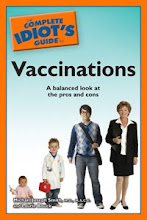Chemicals in paints and household cleaners might be contributing to a rise in childhood cancers, according to the toxin watchdog group Safer Chemicals, Healthy Families. The group is a coalition of individuals and organizations such as Physicians for Social Responsibility, the Environmental Defense Fund, and Moms Rising.
A recent WebMD article, "Childhood Leukemia, Brain Cancer on the Rise," explained that Safer Chemicals, Healthy Families believes that chlorinated solvents (used in paints and spot removers, for example) and lindane (a chemical sometimes used to treat scabies) might be contributing to rising childhood cancer rates. The number of childhood leukemia and brain cancer diagnoses has been increasing about 1% a year over the past 20 years, according to Boston University environmental health professor Richard Clapp.
The article states that improved diagnostic techniques might mean that these cancers are not really becoming more common, they are just being diagnosed more accurately. Some experts also believe that the chemicals and pesticides used today are more targeted, and thus less harmful, than those used in the past.
Still, it is worth thinking about our day-to-day exposure to toxins and their impact on our health. Safer Chemicals, Healthy Families would like to expand the 1976 Toxic Substances Control Act to better regulate the wide range of chemicals now in use in everyday products. Their website includes a resource page with links to nontoxic tips.
Surely everyone can take a few steps to decrease their household exposure to potentially harmful substances: replace a cleaner with a non-toxic alternative, switch out some standard produce for organic alternatives (start with the Environmental Working Group's dirty dozen, the most pesticide-laden fruits and vegetables), or order the Oregon Environmental Council's Eco-Friendly Home Checkup Guide.
Subscribe to:
Post Comments (Atom)




No comments:
Post a Comment